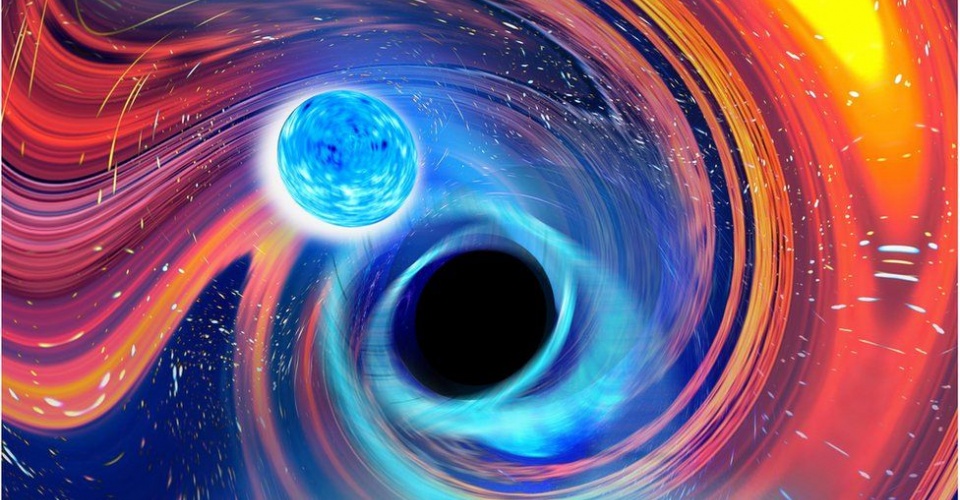Scientists have detected two collisions between a neutron star and a black hole in the space of 10 days.
Researchers predicted that such collisions would occur, but did not know how often.
The observations could mean that some ideas of how stars and galaxies form may need to be revised.
Prof Vivien Raymond, from Cardiff University, told BBC News that the surprising results were ''fantastic''.
"We have to go back to the drawing board and rewrite our theories," he said effusively.
"We have learned a bit of a lesson again. When we assume something we tend to be proved wrong after a while. So we have to keep our minds open and see what the Universe is telling us."
Black holes are astronomical objects that have such strong gravity, not even light can escape. Neutron stars are dead stars that are incredibly dense. A teaspoonful of material from a neutron star is estimated to weigh around four billion tonnes.
Both objects are cosmological monsters, but black holes are considerably more massive than neutron stars.
In the first collision, which was detected on 5 January 2020, a black hole six-and-a-half times the mass of our Sun crashed into a neutron star that was 1.5 times more massive than our parent star. In the second collision, picked up just 10 days later, a black hole of 10 solar masses merged with a neutron star of two solar masses.
When objects as massive as these collide they create ripples in the fabric of space called gravitational waves. And it is these ripples that the researchers have detected.




















